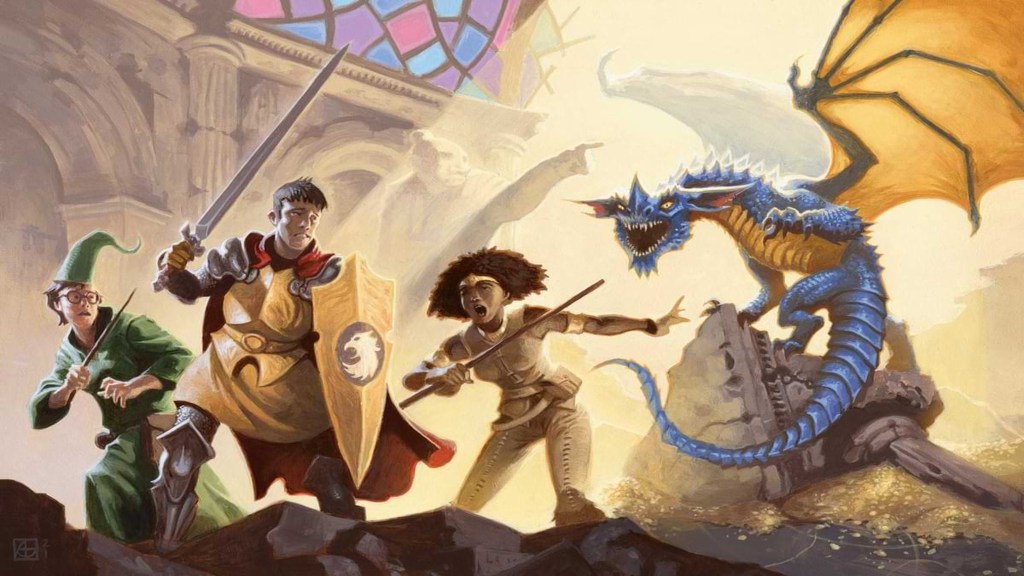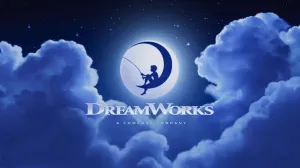There’s no better way to experience everything Dungeons & Dragons has to offer than by being the DM. You get to bring epic stories to life and entertain your friends, all while immersing yourself in the most famous RPG ever made. However, many who would love to create their own campaigns refrain from doing so because they are terrified of getting something wrong. Are you one of them? Don’t worry: I’ve prepared the ultimate guide for what you need to know as a first-time DM. Knowledge is power (or so the wizards tell us), and learning a few tips and tricks will give you the confidence needed to run everything from one-shots to campaigns.
Videos by ComicBook.com
Now, roll for initiative and keep reading to discover one “critical tip” after another!
1) Start With Making One-Shots

By definition, Dungeons & Dragons DMs love to dream big. Nobody takes this gig on unless they want to create the kinds of epic fantasy campaigns that players will remember for the rest of their lives. However, the blunt truth is that you’ll never be able to create an awesome campaign if you don’t start by creating awesome one-shot adventures instead.
Think about it: nobody writes an entire book before they master writing short stories. And creating one-shots will help you get used to DM dynamics (including handling the inevitable unexpected player shenanigans)
2) Every Campaign Needs a Session Zero

After mastering the art of the Dungeons & Dragons one-shot, you’ll be tempted to jump right into the campaign. However, for the sake of both you and your players, you are better off running a Session Zero. If you’re not familiar with the term, “Session Zero” refers to a non-gameplay session where the DM and players go over the most important info. If you have any completely new players, this would be the time to go over basic rules, but don’t feel like you need to explain the entire Player’s Handbook.
For non-newbies, the primary point of a Session Zero is to make sure that future gameplay sessions go well. The players get a chance to get to know one another and introduce their characters to the group. Meanwhile, the DM gets to describe the world he has developed (something new, or maybe a return to the Forgotten Realms), as well as any house rules players must abide by.
It sounds simple because it is simple, but having a Session Zero often makes the difference between a campaign starting strong or dying as quickly as a Level 1 character who just suffered a crit hit.
3) You Don’t Have to Memorize Every Rule

For me, the scariest prospect of becoming a DM was learning all the rules. I often struggled with remembering the intricacies of my own character’s limited rules. Understandably, I was intimidated by the prospect of having to learn all there is to know about my entire group’s abilities as well as the abilities of any enemy NPCs I made my players fight.
Rest assured, though, that you don’t need to memorize every rule. Starting out, you mostly need to know your player’s core abilities, and there just aren’t that many at Level 1. As a DM, you’ll learn more as your players level up, and it’s easy to find answers to most questions by searching the internet. Digital versions of the rules can help, but many old-school DMs still feel like print Dungeons & Dragons beats digital.
Plus, you’re the DM: with your players’ consent, you can always modify the rules you don’t like or that don’t work in the name of creating a more fulfilling campaign.
4) Leave Room for Creativity and Exploration

Writing out a Dungeons & Dragons campaign is a lot like writing a really long story. As such, you’ll often be tempted to write down every last detail of your campaign, including how players are supposed to solve various puzzles, riddles, and enemy encounters. However, here’s some major wisdom it takes many DMs far too long to realize: you just need to create problems without coming up with the “right” way to solve them.
This gives your players plenty of room to get creative. Maybe they find an awesome way to sneak up and kill the Big Bad, or they develop a completely unexpected answer to a crazy puzzle. Bad DMs will fret because players didn’t solve these things the “right” way. Good DMs give players the chance to get creative and explore their options.
As an added bonus, this approach makes planning sessions easier for the DM. Why spend a long time coming up with the right answer to a puzzle when you can just go with whichever player’s answer seems like the most fun?
5) Remember: It’s Not You Versus the Players

Dungeons & Dragons is a tabletop game with two groups: players and DMs. Unfortunately, far too many of each group feel like this is meant to be a competitive battle between them. Because of this, many bad DMs think about the various ways they can annoy, challenge, and ultimately defeat even the most skilled players.
In reality, D&D is meant to be a cooperative story. Yes, DMs must challenge players, but all of that is in service of delivering moments that are both fun and fulfilling. Think about different ways that you can work with your players to develop their characters and offer the kind of tabletop experience they are looking for. If you just want to argue and kill each other, then you should pack up D&D and just play some Munchkin instead!
6) Learn From Other DMs, But Don’t Bite Their Style
Many people who want to DM Dungeons & Dragons are inspired by the DMs in shows they watch, such as Critical Role. However, I’m going to bust your bubble right now: you’re never going to be the next Matt Mercer. He and other rockstar DMs do a great job, but they are supplemented by resources you don’t have, including a lifelong career in voice acting and a professional production staff.
That doesn’t mean you can’t learn from these DMs and integrate some of what you’ve learned into your own style. For example, maybe you love the silly voices so much that you start practicing on your own, surprising your players once you’ve mastered the art of wacky accents. Or maybe you like the atmospheric sessions and decide to invest in things like 3D scenery.
Instead of trying to bite the style of a single celeb DM, try to learn a little bit from several of them. That way, you learn from the best while still developing your own signature style.
7) Build Campaigns Around Players

As a DM, it’s easy to approach creating campaigns as a one-sided (as opposed to a 20-sided) process. You write, they play, right? In reality, though, the best campaigns are actually built around characters. By that, I mean you need to incorporate your players’ characters (including their arcs, their loves, and their archnemeses) into your sessions.
Remember, your players are all trying to develop their own character’s stories. As a DM, you should try to make that happen, working collaboratively with your players on certain elements of the story. This is easier than you might think. For example, if your next session calls for your adventurers to encounter a guide, try making that guide the long-lost brother a character has been frantically trying to find. If it calls for your characters to encounter a princess, make this NPC the childhood crush of one of the characters.
This simple step adds weight and meaning to every session. Plus, it gives players buy-in to keep gaming with you every week! Just remember the golden rule of discussing major changes with your players before you unveil them, so both of you are on the same page.
8) Set One Meeting Time and Stick to It

DMs are often people pleasers, especially when running campaigns for friends. Accordingly, you may be tempted to work around everyone’s schedules and create different meeting times and days each week. Trust me, though: this “friendly” gesture is the quickest way to kill a campaign.
Instead, set one day and time each week for gaming, like “Every Friday at 7 p.m.” Sure, you might occasionally have a player who is too busy to play, but it’s easy to work around that. If you try to meet at a different time every week, though, it will create far more schedule conflicts, and your players may just stop showing up altogether.
9) Make Each Session Balanced (More or Less)

Pop quiz: what do you think a bad Dungeons & Dragons session looks like? There are many possible answers, but the most common complaint is that everyone spent too much time doing the same thing. If an entire session is spent exploring a new town or engaging in one giant fight, at least some of your players are going to be disappointed.
That’s because different players love D&D for different reasons. Some love roleplaying, some love exploration, some love combat, etc. As a good DM, your job is to pepper each session with a little bit of everything. That way, every player gets a healthy dose of what they love most about the game. Plus, including a variety of activities and events makes things easier for DMs because it gives you plenty of possibilities for each session.
This beats the alternative. Trust me: it’s just as annoying to plan four hours of pure combat as it is for your players to slog through it!
What are your biggest tips for other DMs? Let us know in the comments below!









